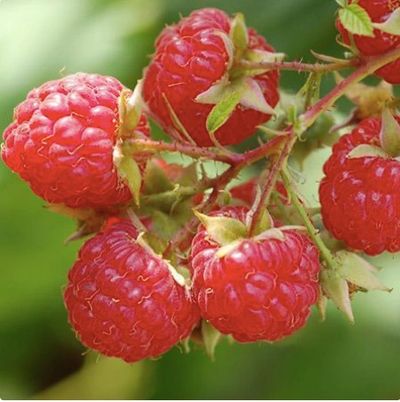Signed in as:
filler@godaddy.com
Signed in as:
filler@godaddy.com

3 to 8 stalked flowers in loose clusters at the tips and upper leaf axils of 1-year-old stems.They have little white blooms that grow into tasty red berries.
Fruit is a round cone-shaped cluster, 1/3 to ½ inch in diameter of fleshy drupelets, turning purplish red and easily separating from the receptacle when mature, and very tasty!
Leaves are alternate and compound with 3 or 5 leaflets, mostly in 3s on flowering stems and pinnately in 5s on non-flowering stems. Leaflets are egg-shaped to oblong, the center leaflet is stalked and sometimes 2 or 3 lobed, the lateral leaflets stalkless and unlobed, typically 1½ to 3½ inches long, 1 to 2¼ inches wide, with a long taper to a slender, pointed tip and rounded to heart-shaped at the base. Edges are single or double toothed, the upper surface dark green, sparsely hairy to smooth, lower surface silvery and densely hairy.
Part shade, sun; moist to dry soil; open woods, woodland edges, meadows, lakeshores, roadsides, railroads
A raspberry is made up of many tiny bead-like fruits called “drupelets” clustered around a center core. Each drupelet contains one seed, and an average raspberry has 100 to 120 seeds. Crazy, huh??
The main difference between raspberries and blackberries is that raspberries have a hollow core in the middle while blackberries do not.
****If each raspberry has 100 to 120 seeds, how many seeds would 5 raspberries
Cooking help us understand and optimize your orchard website experience. By accepting the use of cookies, your data will be aggregated with other user data.